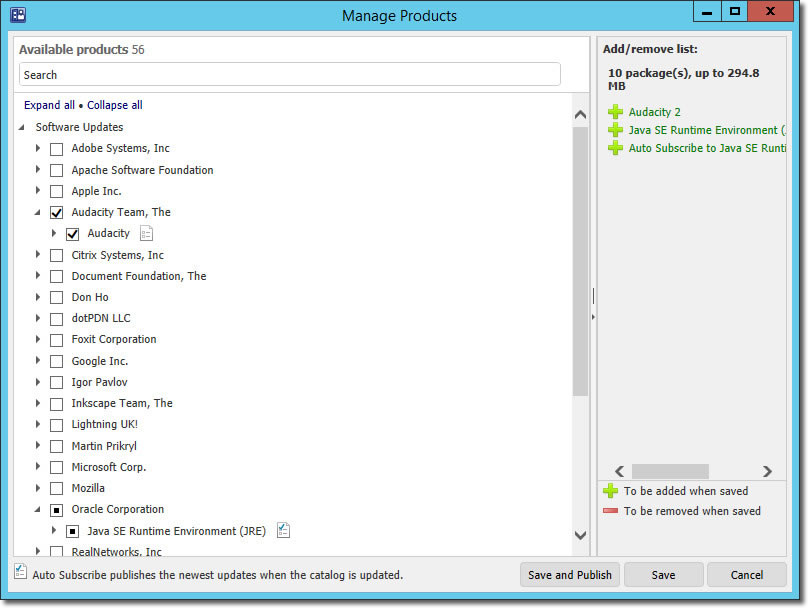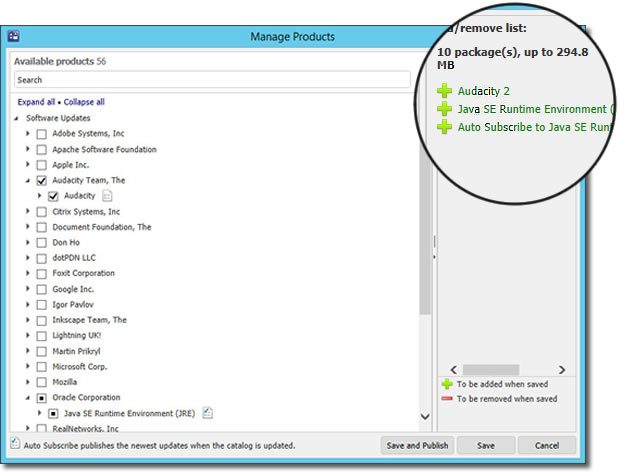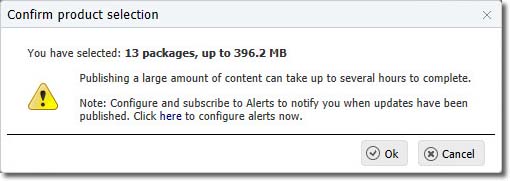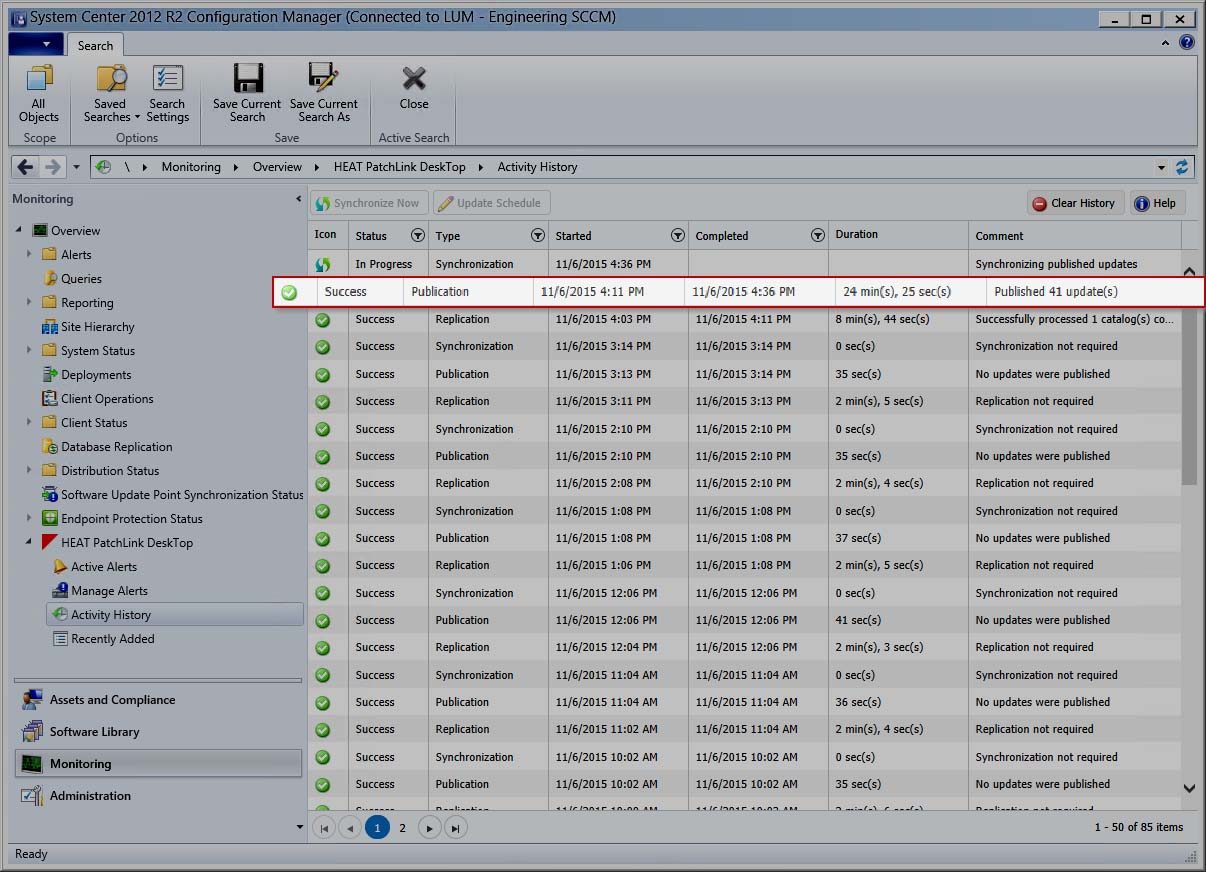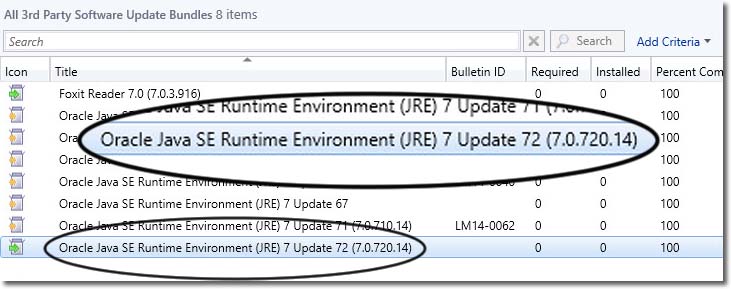Getting Started Procedures
All the step-by-step instructions for getting up and running are right here.
Prerequisites:
Let HEAT PatchLink DeskTop for System Center (HEAT PatchLink DeskTop) synchronize the HEAT PatchLink DeskTop Catalog for the first time.
This action automatically begins after installation of the HEAT PatchLink DeskTop Server. You may need to let it complete the
download.
Step 1: Log In
- Log on to either your WSUS Server or any other system that has the HEAT PatchLink DeskTop Console Plug-in installed.
- Using either the start page or the start menu, open the System Center Configuration Manager console.
Result: The System Center Configuration Manager Console opens.
Step 2: Publish software
Result:
- The software you selected begins publishing.
- The Activity History view makes a listing for the publication and displays its progress.
- When the publication completes, you can access the software within the Software Library Workspace.
Step 3: View Publication Status
After you publish software for the first time, you have to wait for publication to complete. Navigate to
Activity History to view the status of your publication.
Result: After the Status column changes to Success, the software is
published within WSUS.
Step 4: Deploy Software
Prerequisites:
Per the standard System Center Configuration Manager workflow, create a network share that will be used as a location where your deployment
targets can use to access the software.
